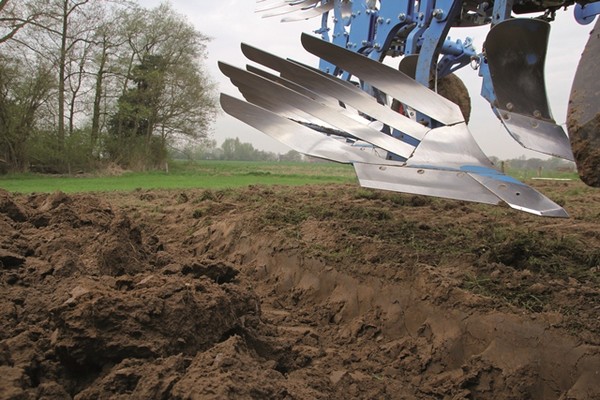
Soil tillage: solutions and strategies for less impact
The article describes the results of a research centered on the environmental impact produced by soil tillage. With an articulated methodology, we can compare the impact caused by tillage carried out directly by the farmer and that produced by the work of a contractor
More and more, agriculture plays a multifunctional role and must do so in a sustainable way not only from an economical but also an environmental and social point of view. To this end, the role of mechanization of open field operations is decisive because it allows, on the one hand, to maximize production yields while creating the ideal conditions for crop growth and to reduce losses during harvesting, and on the other as the environmental impact associated with it is not negligible. Recent studies have confirmed that the impact of mechanization, although less strong than that of other operations such as fertilization, can affect more than 1/3 of the total impact on field crops. Besides the consumption of diesel and lubricating oil, this impact is caused by the machinery amortization and, above all, by the endothermic engines exhaust gas emissions of tractors and self-propelled implements. It is possible to reduce the incidence of mechanization on the environment by resorting to the most appropriate technical solutions in terms of choice of implements and in terms of company organization.
In this paper, we present the results of two studies conducted recently on the environmental impact of soil tillage and sowing operations. In the first study, we compare different solutions for soil processing (primary and secondary processing) performed by a farmer working directly with implements and tractors of the company’s machinery. In the second, the impact of the farmer is compared with that of the contractor concerning the operations of preparing the sowing and sowing bed.
Primary and secondary processing
We considered a cereal farm with a SAU of 60 hectares and the different solutions of primary and secondary soil tillage of the soil were evaluated considering a growing degree of soil harrowing. Fig. 1 shows the schematization of the different solutions considered, these solutions were subsequently evaluated considering the different depths of primary processing, the different implements (e.g. subsoiling, moldboard plow, slatted plow, etc.) and the different soil texture. A total of 13 sequences of primary and secondary processing were analyzed: loose/sandy soils). The feasibility of a sequence in the different pedoclimatic situations was assessed based on the characteristics of the implements used (for example, sequences involving hoeing were not considered for loose/sandy soils).
The results obtained using the life cycle analysis (LCA) approach show that the impact of the different sequences is, as expected, strongly influenced by the texture of the soil but also by the choice of operating machines. For example, when plowing is performed with a fenestrated plow (Fig. 2) a reduction in diesel consumption is obtained (linked to the lower traction force required) and a consequent benefit for environmental impacts (e.g. carbon footprint, thinning of the ozone layer, consumption of fossil resources) which are caused by the production of fuel and by the emission of pollutants following its combustion.
As an example, Fig. 3 shows the results of the comparison between 4 different soil processing sequences that envisage primary processing at a depth of 35 cm in loose soils. The detail of the 10 sequences considered is reported in Tab. 1.
Contractor or Farmer: which are the impacts?
As limited to the preparation of the seedbed and sowing, with the contribution of CAI (Confederation of Agro-mechanics and Italian Farmers), a study was conducted to assess whether the operations performed by a contractor have a lower environmental impact than those performed by a farmer with tractors and company machinery. As for the contractor, the information necessary for the analysis was acquired through a data collection campaign in 22 agro-mechanical companies located in the provinces of Bergamo, Brescia, Mantova, and Reggio in the Emilia region.
Instead, for the farmer, no direct surveys were conducted but a “typical cereal company” was hypothesized, characterized by a SAU of 50 hectares dedicated to double cultivation, and by a fleet of 4 tractors, the most powerful of 110 kW issue IIIA. The implements and tractors annual hours of use were taken from surveys previously carried out on farms in the Po Valley dealing with cereals and cereal-livestock.
The survey carried out at the contractor companies made it possible to identify two main types of processing for the seedbed processing: i) conventional, consisting of plowing at a variable depth depending on the crop (25, 35 and 40 cm) and, subsequently, one or more harrowing (depth of 15 cm) through the use of disc or rotary harrows depending on the texture, ii) minimum processing, consisting of a primary processing at a depth of 15 cm. As far as sowing is concerned, precision and striped seeders were considered.
A total of 28 mechanization sequences were analyzed. Each sequence consists of several field operations ending with sowing.
The environmental analysis was conducted using the life cycle analysis (LCA) approach. LCA is an approach defined by ISO standards that allows quantifying the impact of a product or process by considering all inputs (e.g. inputs used) and outputs that characterize it (e.g. emissions into the environment). The impact was calculated for “1 ha (50 x 200 m) of worked and sown land”. Concerning the calculation of the impact, both for the contractor and for the farmer, the following were considered: a) the “virtual consumption” of the tractor and the implement, calculated on the basis of their weight, their duration, and their annual use and at work times, b) diesel consumption, c) exhaust gas emissions, calculated on the basis of diesel consumption and the emission stage.
On the environmental level the following consequences have been evaluated: Climate Change (CC - quantifies the impact on global warming), Ozone layer Depletion (OD - quantifies the effect on the thinning of the ozone layer), terrestrial acidification (TA) , eutrophication of freshwater (FE - measure of eutrophication of freshwater), eutrophication of marine waters (ME), human toxicity (HT), formation of photochemical smog (POF), formation of particulate matter (PM), consumption of metals (MD) and consumption of fossil resources (FD). The results show how the impact of seedbed and seedbed preparation work is generally lower when mechanization is carried out by an agro-mechanical farm.
Tab. 2 shows the average results calculated considering the different sequences examined for the two situations being compared (contractor - CT and direct grower - CD) and the CT/CD ratio. In summary, if the CT/CD ratio is greater than 1 then the contractor on average has a higher impact while, vice versa, if it is
The contractor achieves considerable reductions in the incidence on the environment (up to -75%) compared to the farmer especially for those phenomena such as acidification (TA), marine eutrophication (ME), the formation of smog (POF) and fine dust (PM) in which the effect on the environment is linked to the pollutants emitted with the tractor exhaust gases. These differences are caused by the emission reduction systems with which modern tractors are equipped (mostly used by contractors who have a more recent fleet) to respect the limits imposed by the community directives. In the case of other impacts (global warming - CC, thinning of the ozone layer - OD and consumption of fossil resources - FD) the reduction in impact is lower (9-25%) and is linked to the reduction in diesel consumption achieved thanks to the use of implements characterized by greater working widths and more efficient tractors.
Conclusions
Tilling activities are among the most energy-intensive operations among those commonly carried out for open field crops and, consequently, they are responsible for a non-negligible cost and environmental impact. From an environmental point of view, the results presented show how this impact can be reduced by carefully choosing the most appropriate implements as well as by resorting to the contractor and/or using more modern tractors and equipped with the various emission abatement devices. Basically, considering that the average area of Italian farms is limited, although, with great variability among the various areas, the use of agro-mechanical farms appears to be the most efficient solution to reduce the impact.








